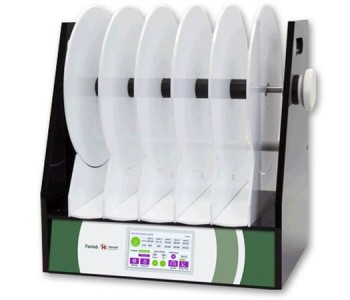Authors
M Fréchou, X Zhu, P Liere, A Pianos, M Schumacher et al
Lab
U1195 Inserm and University Paris-Sud and University Paris-Saclay, Kremlin-Bicêtre, France
Journal
Neuropharmacology
Abstract
Intranasal administration is emerging as a very promising route to deliver therapeutics to the brain. We have recently shown that the intranasal delivery of progesterone at 8 mg/kg is neuroprotective after stroke in male mice. To explore the translational potential of intranasal progesterone treatment, we performed a dose-response study and analyzed outcomes at 48 h after middle cerebral artery occlusion (MCAO). The effects on functional outcomes at long-term were examined by using the optimal dose. In the first experiment, male C57BL/6JRj mice were treated with progesterone at 8, 16 or 24 mg/kg, or with placebo at 1, 6 and 24 h post-MCAO. Our results show that the dose of 8 mg/kg was optimal in counteracting the early histopathological impairments as well as in improving functional recovery. Steroid profiling in plasma showed that the dose of 8 mg/kg is the one that leads to sustained high levels of progesterone and its neuroactive metabolites. In the second experiment, the dose of 8 mg/kg was used and analyzes were performed at 2, 7 and 21 days post-MCAO. Progesterone increased survival, glycemia and body weight. Furthermore, progesterone decreased neurological deficits and improved performances of mice on the rotarod and pole as early as 2 days and up to 21 days post-MCAO. These findings show that intranasal administration of progesterone has a significant translational potential as a cerebroprotective treatment after stroke that can be effective to reduce mortality, to limit tissue and cell damage at the acute phase; and to confer a long-term functional recovery.
BIOSEB Instruments Used
Aron Test or Four Plates Test (LE830),Rotarod (BX-ROD)
Source :
https://www.sciencedirect.com/science/article/abs/pii/S0028390820301040#!

 Douleur - Allodynie/Hyperalgésie Thermique
Douleur - Allodynie/Hyperalgésie Thermique Douleur - Spontanée - Déficit de Posture
Douleur - Spontanée - Déficit de Posture Douleur - Allodynie/Hyperalgésie Mécanique
Douleur - Allodynie/Hyperalgésie Mécanique Apprentissage/Mémoire - Attention - Addiction
Apprentissage/Mémoire - Attention - Addiction Physiologie & Recherche Respiratoire
Physiologie & Recherche Respiratoire




































 Douleur
Douleur Système Nerveux Central (SNC)
Système Nerveux Central (SNC)  Neurodégénérescence
Neurodégénérescence Système sensoriel
Système sensoriel Système moteur
Système moteur Troubles de l'humeur
Troubles de l'humeur Autres pathologies
Autres pathologies Système musculaire
Système musculaire Articulations
Articulations Métabolisme
Métabolisme Thématiques transversales
Thématiques transversales Congrès & Meetings
Congrès & Meetings 